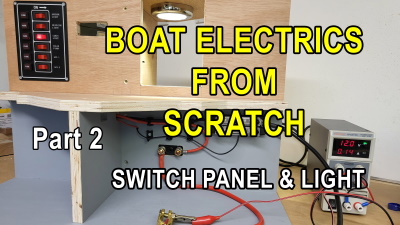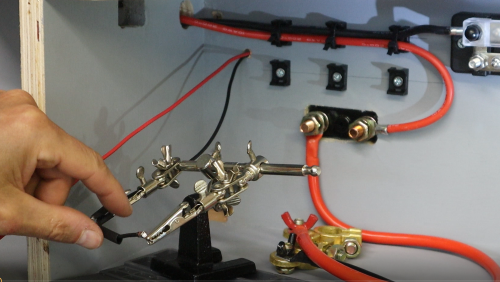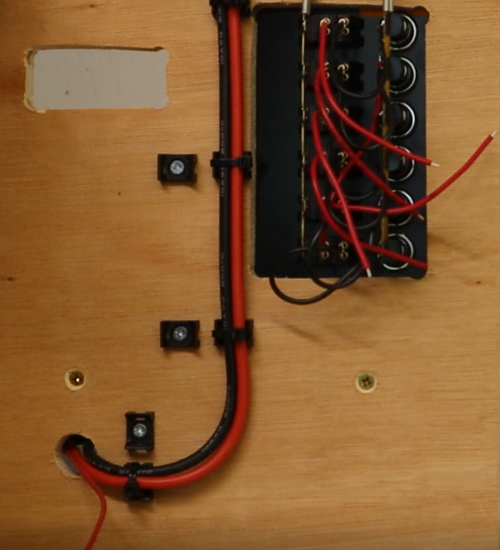Boat electrical wiring from scratch: Part2. In this part we take wires from the electrical master switch to the boat main switch panel, and also from the 'negative earth' bus-bar to the switch panel. We consider the total current draw the we need to cater for in the main switch panel and the wire gauge needed to be safe for the maximum current draw in the boat electrical system.
To jump straight into the video guide, click on the image below:
As we go through the wiring step-by-step we look at the types of connectors, covering size of connector, soldering of the connector to the boat electrical wire, and using heat-shrink to minimise the risk of accidental short circuits in the boat electrical system.
To keep the wiring organised and tidy in the boat, we look at screw mounted retaining pads, and tie-wraps to keep the wire runs in place and looking neat. When installing the boat interior cabin light we look at the method of attaching the light to the ceiling of that boat, and we also extend the wires by soldering some extension wires, using heat-shrink to cover and protect the soldered joint. During this part of the guide we work out some difficulties with wire electrical terminal ends, and find a couple of solutions to make sure the terminal ends fit the wire as well as fitting the electrical fittings that wire is going to be connected to.
As we power-up the boat electrical system for the first time, we talk a little bit about the need for taking care with the possibility of accidental short-circuits when working around batteries (boat and car 12V batteries have a large current capacity and great care should be taken to avoid short circuits especially when using metal tools like spanners near the battery terminals)
When connecting up to the boat main switch panel we look at the main feeds to the switch panel, as well as the individual leads that come from the switch panel to take the positive side of the circuit to the individual electrical components being fitted to the boat.
The negative 'main feed' wire from the bus-bar to the switch panel (for this particular switch panel) actually is only needed for the purpose of illuminating the rocker switches - the circuit is completed for each individual items by taking the negative wire from the component, directly back to the bus-bar.
In this example we chose 10-gauge wire for the main feed wires to the boat switch panel, to cover the maximum current draw of 30Amps (6 switches x 5Amps). This was needed for the positive feed wire to the switch panel, and we chose also to use 10-gauge wire for the negative main switch panel wire for consistency, even though in actuality for this particular switch panel the negative main wire is only powering the illumination of the rocker switches.
At the end of this Part 2 video we show the boat cabin light working. In the next video (Part 3) we start looking at incorporating bilge pumps and float switches into this electrical system.
If you find this kind of information useful you might like to sign up to our news letter so that we can let you know when the next guide becomes available, just click on the button below:


 0 Items £0.00
0 Items £0.00 





